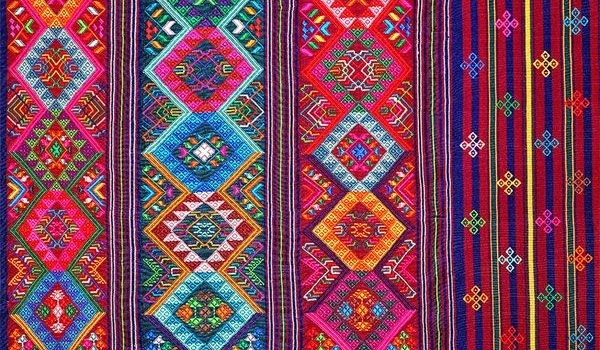
Bhutan, Land of the Thunder Dragon: The Weavers' Trail

A distant clanking of pans and ethereal tendrils of juniper-infused smoke drifted across the still valley of pines. It was ten in the morning and an eerie, uncanny half-light had suddenly enveloped us. Evil spirits were taking a bite out of the sun and needed to be banished. This was our first day in Bhutan and we were heading along narrow lanes to visit the ancient Drukgyel Dzong. There was no doubt we'd arrived somewhere 'other'.
Bhutan is the last remaining Buddhist kingdom in the Himalayas. Dzongs are fortress-monasteries, places of combined secular and religious power that govern each district. Buddhism permeates all aspects of life in this mountain country, as do deep-rooted and vibrant textile traditions.

An ancient, highly developed art, the intricate, richly coloured weavings only slowly came to the notice of textile connoisseurs during the 1980s. Closed off from the gaze of the world until the 1960s, this tiny kingdom had quietly established the unique heritage of its characteristic exquisite detailed fabrics in complete isolation. They are unlike anything else. It is quite remarkable.
Weavers have eminent status in Bhutanese society. Their sophisticated creations, which can take up to a year to create, carry great value and are prominent in its culture. Textiles are traditionally given as gifts for births, weddings and promotions and to honour visiting dignitaries. Beautifully woven kiras (women's costume) are typically handed down through generations and brought out on special occasions, for example, to be paraded at the local Tsechu (festival). Along with the striking dance costumes, they are a visual feast.

In the high central area of the country, woollen blankets are made on wooden 'Tibetan' looms. In Radi, in the remote east, raw silk is woven on traditional back-strap looms. In the equally remote Lhuntse district further north, the finest silk kiras are made using an extremely intricate supplementary weft technique. Whether, cotton, silk, wool, yak, nettle or bamboo, each area is marked by its own distinct identity of material and technique.
With its beautiful mountain landscapes, fascinating architecture and culture, hospitable and friendly people, and of course, stunning textiles, Bhutan is an extremely special place to visit. It will get under your skin.

Guest blog by Sue Lawty
Sue is running a tour in Bhutan later this year. This unique trip has been designed to combine first-hand experiences of weaving, visits to weavers in their own homes and to the textile centres of the kingdom. Click here to find out more.
Sue is also creating an exhibition, hosting a talk and giving a workshop for TOAST's upcoming Creative Residency at Paper Mill Studios 4-6 May. Click here to find out more.
